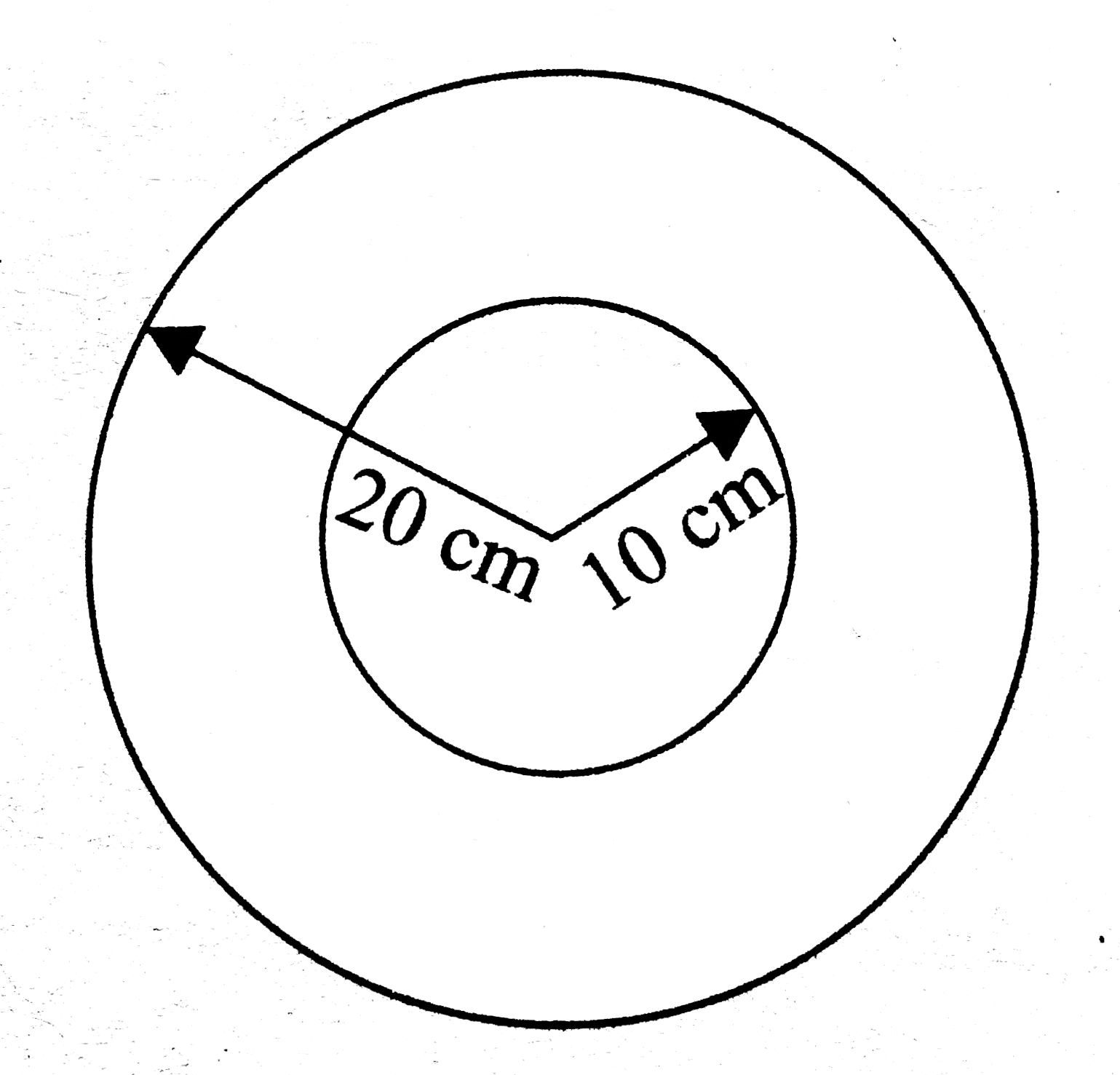The electric field strength in air at NTP is 3×106V/m. The maximum charge that can be given to a spherical conductor of radius 3m is
3×10−4C
3×10−5C
3×10−2C
3×10−1C
Step by step video & image solution for The electric field strength in air at NTP is 3 xx 10^(6)V//m. The maximum charge that can be given to a spherical conductor of radius 3m is by Physics experts to help you in doubts & scoring excellent marks in Class 12 exams.
Updated on:21/07/2023Topper's Solved these Questions
- ELECTROSTATICS BOOK - ERRORLESS CHAPTER - ELECTROSTATICS EXERCISE - Ordinary Thinking Objective Questions (Electric Dipole)
38 Videos
- ELECTROSTATICS BOOK - ERRORLESS CHAPTER - ELECTROSTATICS EXERCISE - Ordinary Thinking Objective Questions (Electric Flux and Gauss.s Law)
28 Videos
- ELECTROSTATICS BOOK - ERRORLESS CHAPTER - ELECTROSTATICS EXERCISE - Ordinary Thinking Objective Questions (Electric Flux and Gauss.s Law)
28 Videos
- ELECTRONICSBOOK - ERRORLESS CHAPTER - ELECTRONICSEXERCISE - Selv Evaluation Test
23 Videos
- HEATING AND CHEMICAL EFFECT OF CURRENTBOOK - ERRORLESS CHAPTER - HEATING AND CHEMICAL EFFECT OF CURRENTEXERCISE - Self Evaluation Test
14 Videos
Similar Questions
If the electric field strength of air is 3×106V/m, what will be the maximum potential at the surface of a metal sphere of radius 1m.
View SolutionThe is one parallel plate air capacitor having plate area 40 cm2 and separation between the plates equal to 0.1 mm. Dielectric strength of air is 3×106 V/m. find maximum rms voltage that can be applied across capacitor without electric breackdown.
View Solution
Knowledge Check
The insulation of air vanishes when the electric field is 5×105 V/m .the maximum charge that can be given to a sphere of radius 3m is approximately
A5μCB500μCC10μCD1μCThe insulation property of air breaks down at E=3×106volt/meter. The maximum charge that can be given to a sphere of diameter 5m is approximately (in coulombs)
A2×10−2B2×10−3C2×10−4D2×10−5A conducting spehre has a radius 30 cm .If the dielectric strength of surrounding air is 3'106 V/m, the maximum amount of charge the sphere can holdin micro coulombs is
A0.03B0.3C3D30
We have two metal plates of surface area 1m2 to construct an air parallel plate capacitor. A potential difference of 210 V is to be applied across the capacitor. The dielectric strength of air is 1 and electric field between the plates is 3×106V/m. What can be the minimum separation between two plates? If the capacitor is constructed accordingly then how much charge it will hold when connected across a 210 V supply?
View SolutionThe electric intensity at a point 1 metre from the centre of a charged spherical conductor of radius 20 cm is 105N/C. If the conductor is in a medium of permittivity 35.4pF/m, the surface density of charge on the conductor is
View SolutionWe have an isolated conducting spherical shell of radius 10cm. Some positive charge is given to it so that the resulting electric field has a maximum intensity of 1.8×106NC−1. The same amount of negative charge is given to another isolated conducting spherical shell of radius 20cm. Now, the first shell is placed inside the second so that both are concentric as shown in (Fig. 3.154).
 .
.
The electric field intensity just inside the outer sphere.
View SolutionWe have an isolated conducting spherical shell of radius 10cm. Some positive charge is given to it so that the resulting electric field has a maximum intensity of 1.8×106NC−1. The same amount of negative charge is given to another isolated conducting spherical shell of radius 20cm. Now, the first shell is placed inside the second so that both are concentric as shown in (Fig. 3.154).
 .
.
The electric potential at any point inside the first shell is.
View SolutionWe have an isolated conducting spherical shell of radius 10cm. Some positive charge is given to it so that the resulting electric field has a maximum intensity of 1.8×106NC−1. The same amount of negative charge is given to another isolated conducting spherical shell of radius 20cm. Now, the first shell is placed inside the second so that both are concentric as shown in (Fig. 3.154).
 .
.
If both the spheres are connected by a conducting wire, then.
View Solution
